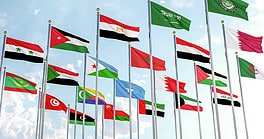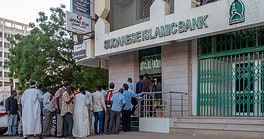A NEW DAWN
“O wonder!
How many goodly creatures are there here!
How beauteous mankind is!
O brave new world
That has such people in’t!”
—William Shakespeare’s The Tempest, Act V, Scene I.

There have been no major emerging market financial crises since the Uruguay banking crisis in July 2002, when a run on the banks of this small South American country caused the government to freeze banking operations. Uruguay’s economy came under duress as a result of over-dependence on neighboring Argentina, which itself suffered a major economic crisis in 2001 that boiled over into riots in the streets.
Late last year, as the 10-year anniversary of the devastating Asian financial crisis approached, Timothy Geithner, president and chief executive of the Federal Reserve Bank of New York, said the causes and implications of the financial crises of the late 1990s remained the subject of contentious debate. “The world today looks considerably different than it did on the eve of those crises, but the episode still looms large in the minds of policymakers and financial market participants,” he said in a lecture at the Paul H. Nitze School of Advanced International Studies at Johns Hopkins University in Washington, DC.
 |
|
Allen: World economies are more resilient because central bankers and policymakers are doing a good job |
“The damage and fear of that time had a substantial impact on behavior, both in terms of the policies of governments and how market participants think about and manage risk,” Geithner said. “And those changes in behavior have been important contributors to the period of stable real growth and financial-sector resilience that has characterized much of the world since,” he said.The financial crises of the late 1990s began in the emerging world and caused very substantial damage to the economies and financial systems of a large number of emerging market economies, Geithner said. “While no broad characterization can do justice to the different conditions at play, I believe the available evidence supports the view that the crises were generally most acute where there was a large buildup in short-term external debt, encouraged by the presence of a fixed exchange-rate regime and perverse incentives in the capital account, tax and supervisory regimes,” he said.
With their weak balance sheets, these countries were exposed to adverse shifts in confidence, Geithner explained, with the inevitable break in exchange-rate regimes and little flexibility for macroeconomic policy to cushion the damage. “As domestic and foreign investors rushed to reduce exposure to a country, the exchange rate fell further, increasing losses for the banks and corporations that had borrowed in dollars and magnifying fear of default,” he said. Central banks were reluctant to raise interest rates to support their currencies for fear this would make the problem even worse by causing a deeper contraction in growth.
Things look dramatically different today, according to Geithner. Current-account balances of the typical emerging market countries have gone from substantially negative to positive. External debt has been reduced as a proportion of gross domestic product. Foreign currency reserves have grown to remarkable heights. And while public debt burdens have increased, the composition of the debt is less risky, with longer maturities, more debt denominated in local currencies and more fixed-rate rather than floating-rate debt.
Today, exchange-rate regimes are more flexible, central banks are more independent, inflation has been brought under control and large holdings of reserves are available to cushion shocks. All of this means that future sudden changes in financial flows should not precipitate damaging runs on financial assets of a country as they have in the past, Geithner said. If the progress is sustained, he said, the incidence of financial crises in emerging markets will be lower and will look more like what typically occurs during instances of financial stress in the major economies, such as market and asset-price volatility and the potential for substantial financial losses, but less disruption to real economic growth. “This is, of course, a probabilistic judgment, not a certainty,” he said.
“The policy achievements of the last decade are enormously consequential for the people who live in emerging markets,” Geithner said. “If the progress is sustained, the reduced vulnerability to financial crisis and the enhanced efficiency of resource allocation has the potential to dramatically increase long-run growth and living standards in these countries.” A more complete and successful integration of the emerging economies into the global economy offers the prospect of a more prosperous and stable world, he concluded.
Still Susceptible to Crises
Emerging market economies and the world economy in general are less vulnerable than they were 10 years ago or 20 years ago, but that does not mean they are immune from crisis, says Edwin Truman, senior fellow at the Peterson Institute for International Economics in Washington, DC, and former assistant secretary for international affairs at the US Treasury Department. “The good news is that policies are better, these countries have less-rigid exchange rates, bank capitalizations are stronger, and so on,” he says. “But this is not the same as saying that any economy is immune from crisis.”
The business cycle has not been abolished, Truman asserts. New crises will still happen, and a crisis could amplify a global downturn, for example, he says. “Over the last four to five years, the world economy has been very strong,” he notes. “However, some people are unwisely extrapolating the good times.”
It is true that there is a lot more transparency than ever before, Truman says. Some 65 countries are officially in observance of the International Monetary Fund’s Special Data Dissemination Standard, and they release economic information on a timely basis. There is a lot more transparency about reserve holdings, for example. “There are fewer chances for surprises,” he says. “When a crisis does happen, people cannot say, ‘We didn’t know.’”
The current high level of reserves provides a cushion for certain shocks, Truman says. China or South Korea, for example, will have no external financial crises. “But they could have an internal crisis,” he says. “Even for Thailand or Japan, an international slowdown could have ramifications for their economies,” he explains. Some regions, such as Central Europe, and countries such as Turkey still have large current-account deficits, he says. Even in emerging Asia, with its fast economic growth, internal crises may emerge in certain countries if prices start falling and economies weaken, he notes.
Expect the Unexpected
Franklin Allen, Nippon Life professor of finance and economics at the Wharton School of the University of Pennsylvania, says there may well be crises in the future. “World economies are more resilient because central bankers and policymakers are doing a good job,” he says. “However, it is the unexpected that catches people out.”
 |
|
Truman: Economies are less vulnerable than they were 10 or 20 years ago, but they are not immune from crisis |
Japan’s financial crisis was one of the most severe in the past 20 years, even though it took place over a long period of time, according to Allen. Japan’s stock market fell more than 75% from peak to trough, and its property prices fell 75%. Scandinavia also had a banking crisis in the early 1990s, he notes.
“Historically, crises have occurred in developed countries,” Allen says. “The emerging market economies are not having problems at the moment.” It will be interesting to see how the current US credit crisis plays out, he says. The Federal Reserve could be storing up problems for the future by cutting interest rates now, he says, because inflation may rise further down the road. “Meanwhile, there are new problems arising in the US crisis,” he notes. “There will be more defaults and more write-downs.”
The world economy is doing well because of the strength of emerging market countries such as China and India, according to Allen. Meanwhile, China and Japan are losing enormous amounts of money on their massive reserves because of the declining value of the dollar and will likely diversify out of the dollar, which has fallen to record lows, he says. “I think the dollar will fall further, although it won’t be a crisis in the traditional sense,” he says. Increasingly powerful sovereign wealth funds will also diversify their holdings, he says.
Inflation in China is worrisome, and sterilization of the central bank’s currency market intervention to restrain the yuan is not working, Allen says. A big risk to the world economy also could occur if oil producers switch from the greenback to a basket of currencies, which would have significant effects on a wide range of countries, he says.
And while banking systems are better capitalized, they are not without risks, Allen says. “The drying up of the interbank markets in the current credit crunch caught many people by surprise,” he says.
Have we entered a brave new economic world with no crises in it? “It gets more difficult to believe this as time goes by,” Allen says. “There will be more crises.”
Kenneth Rogoff, Thomas D. Cabot professor of public policy, Department of Economics, at Harvard University, says the notion that emerging markets and the world economy in general are more resilient is greatly exaggerated by the global business cycle. “The fact that we went through so many crises in the 1980s and 1990s was unusual,” he says. “There are usually 30 to 40 years between episodes. While there hasn’t been a crisis in the near term, there will be more crises,” he predicts.
This is not to downplay the good things that are happening to the global economy, which has grown significantly, Rogoff says. “The backbone is stronger, but there is more weight being piled on, and eventually it will snap,” he says. There is a lot of uncertainty in the world from geopolitical and human events, he adds.
 |
|
Rogoff: The global economy’s backbone is stronger, but there is more weight being piled on, and eventually it will snap |
Crises will have significant but temporary impacts, according to Rogoff. “We had them regularly in Europe and Latin America in the 1800s and before,” he says. “It is absurd to think that we won’t be seeing them again. The next time it may be a different set of countries, such as the poorer developing countries, perhaps,” he says. The global business cycle will continue, he says. “The emergence of China led to a global commodities boom. Some day commodity prices will collapse,” he predicts.
High and rising prices for metals, oil and food have put the global economy on two independent growth tracks, says Stephen Poloz, senior vice president and chief economist at Export Development Canada. “The adjustments this is fostering can be painful, and there is no let-up in sight,” he says.
The same thing happened in the mid- to late 1970s, when oil and other commodity prices surged, Poloz says. “When this happens, resource sectors grow rapidly, generate new jobs and attract new investment,” he says. “Meanwhile, sectors that use resources as inputs must restructure, adopt new technologies that are less resource-intensive and reduce workforces,” he adds.
In the 1970s, this combination led to stagflation and efforts by central banks to walk a middle path between slowing growth and rising inflation, which resulted in a major inflation outbreak that took years to correct, Poloz says. Now central banks are very alert to this risk, he adds. “Even though the world economy is decelerating, and inflation pressures are likely to ease in 2008, the risk that this is just the 1970s all over again will remain front and center for the next 12 to 18 months,” he says.
Even if oil and other commodity prices ratchet down during the global slowdown, those prices are likely to remain high by historical standards, according to Poloz. Thus, divergent stresses on the world economy will continue, he says.
Fast Credit Growth a Concern
Apart from the oil and commodity price shocks, there remain worries about the health of banking systems in a number of countries. Emerging market banking systems are typically weaker than developed country systems but in general do not show as much sign of lending excess as developed markets, according to a recent report by Fitch Ratings. An exception is Central and Eastern Europe (CEE) and the Commonwealth of Independent States (CIS), where fast credit growth remains a general concern, the report says.
CEE and CIS banking systems are typically weak and less able to withstand systemic stress, according to the Fitch report. Azerbaijan and Russia remain in Fitch’s highest “macro-prudential” risk category of MPI 3. The MPI ratings aim to identify potential stress due to developments in credit growth, asset prices and real exchange rates. Kazakhstan, Romania, Turkey and Armenia could join the highest-risk category in the next six months, based on very tentative Fitch forecasts for 2007, the rating agency says.
Fitch says it also remains concerned about high credit growth where credit-to-GDP measures are already high, such as in the Baltics. Asia and Latin America continue to show little evidence of lending excess, with only 30% of countries in these regions in the higher-risk categories, Fitch says.
Overall, Fitch says it believes that global credit growth is slowing and bank systemic risk is rising. “Frailties that have built up but been masked by rapid credit growth are likely to be exposed as credit growth slows from now on,” says Richard Fox, senior director in Fitch’s sovereign group. Median real global credit growth peaked at 14% last year, its highest rate since the eve of the 1997 Asian crisis, and has slowed this year, he says. The slowdown will become more noticeable as a result of the liquidity squeeze triggered by the US subprime crisis, with global credit growth of around 9% this year, Fitch forecasts.
Whether the next financial crisis stems from the stock market as in 1987, or the currency markets as in 1997, or the real estate and credit markets, it will occur in a new world that has been changed by the memory of what came before and by reactions to past crises. Bubbles will continue to inflate and to burst, but the markets have shown an uncanny ability to retrench and move on to new highs. This is a brave new world with such people in it who have learned the lessons of financial history.
Gordon Platt



